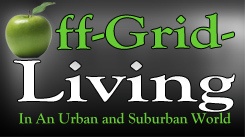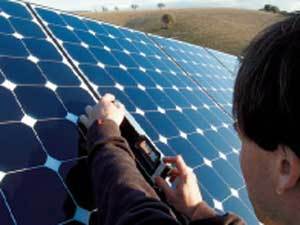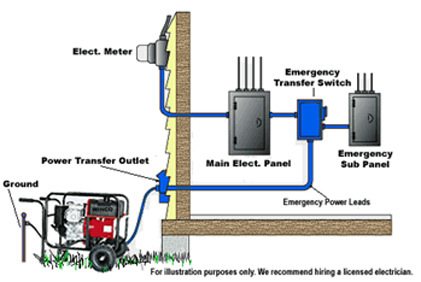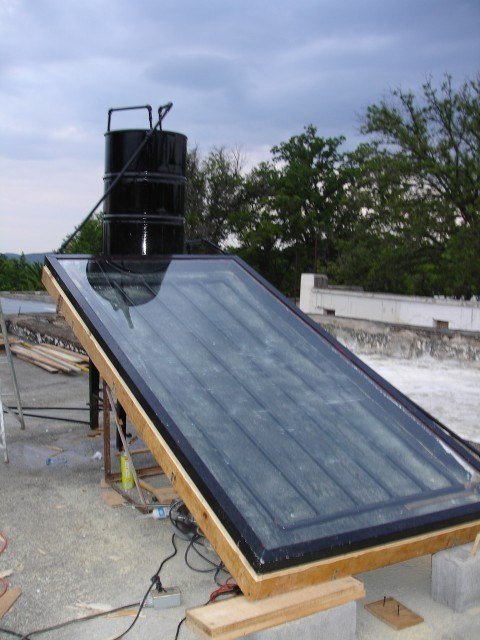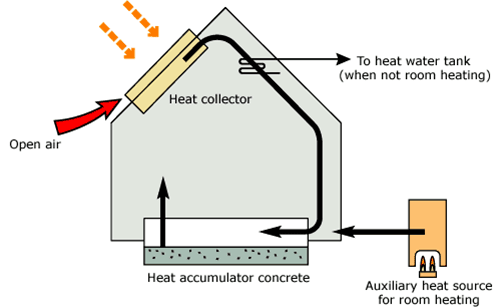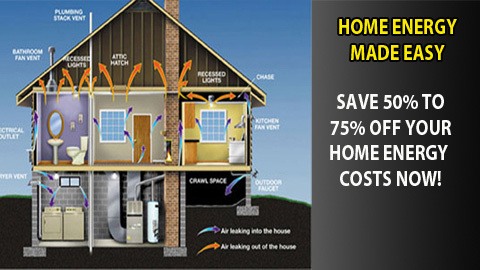The most important thing you need to take away from this off grid power system lesson is…
There are alternative energy solutions to suit any situation, and any budget.
It doesn’t really matter if you live, urban, suburban, or rural. There are options you can use right now to lower, or eliminate, your energy bills. It also really doesn’t matter how much money you have to spend either. The methods I’m going to show you are extremely inexpensive. Depending on your ingenuity, perhaps even free.
Let’s start…

Your Main Off grid power systems options
The main ones we’ll be looking at are …
· Generators (They're greener than you think!)
· Hybrid solar/wind/generators systems.
· Micro-Hydro Systems
Energy Conservation:
First a quick word about energy conservation. As explained in the energy efficiency section of this course, paying attention to energy conversation can lower your utility and energy bills by as much as 70% to 90%. That is the reason I devoted an entire section to this, so I’m not going to spend a lot of time on it here. But in a nutshell, what this course is going to concentrate on is…
· First eliminate as much energy waste as much as possible
· Then make simple updates to your house to increase energy savings.
· Next, replace older appliances as needed with economical, energy efficient models.
· Replace utility energy slowly, step-by-step, with solar and/or wind energy solutions.
· Use back up methods, i.e. generator and/or conventional energy, as secondary methods.
Your off grid power system can be used to supply some, or all, of your energy needs. It really depends on you and your situation. The beauty of this system is that it can be scaled up, or down, as your situation dictates.
First an overview of the various off grid power system available…
Small Solar (PV) Systems:
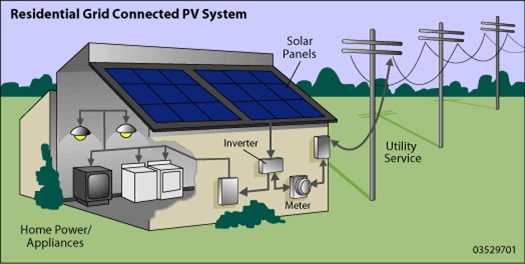
A small solar electric or photovoltaic (PV) system can be a reliable and pollution-free producer of electricity for your home or office. And they're becoming more affordable all the time. Small PV systems also provide a cost-effective power supply in locations where it is expensive or impossible to send electricity through conventional power lines.
Because PV technologies use both direct and scattered sunlight to create electricity, the solar resource across the United States is ample for small solar electric systems. However, the amount of power generated by a solar system at a particular site depends on how much of the sun's energy reaches it.
Thus, PV systems, like all solar technologies, function most efficiently in the southwestern United States, or in any sunny location which receives the greatest amount of solar energy. However, any location which receives sunlight a PV system can be utilized to offset many energy costs.
Small Wind Electric Systems
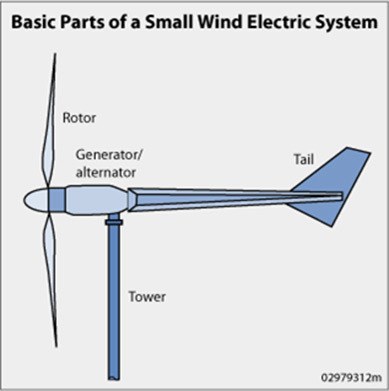
Small wind electric systems are one of the most cost-effective, home-based renewable energy systems. These systems are also nonpolluting.
If a small wind electric off grid power system is right for you, it can do the following:
- Lower your electricity bills by 50–90%
- Help you avoid the high costs of having utility power lines extended to a remote location
- Help uninterruptible power supplies ride through extended utility outages.
Small "Hybrid" Solar and Wind Electric Systems
According to many renewable energy experts, a small "hybrid" electric off grid power system that combines wind and solar (photovoltaic) technologies offers several advantages over either single system.
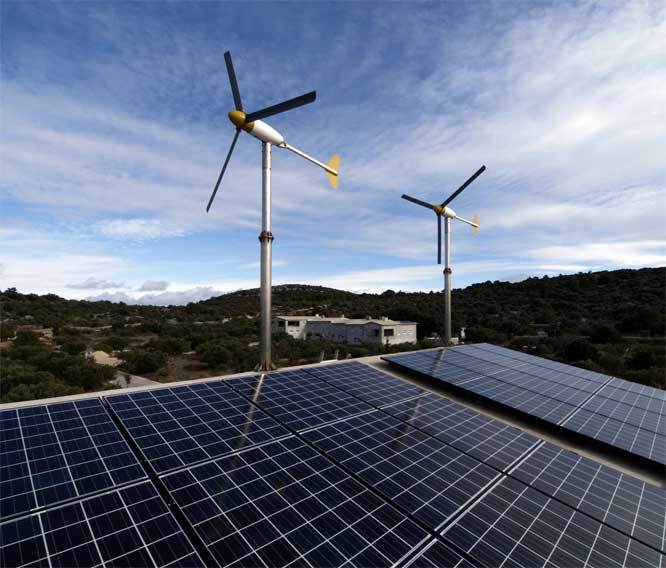
In much of the United States, wind speeds are low in the summer when the sun shines brightest and longest. The wind is strong in the winter when less sunlight is available.
Because the peak operating times for wind and solar systems occur at different times of the day and year, hybrid systems are more likely to produce power when you need it.
Many hybrid systems are stand-alone systems, which operate "off-grid"—not connected to an electricity distribution system. For the times when neither the wind nor the solar system are producing, most hybrid systems provide power through batteries and/or an engine generator powered by conventional fuels, such as diesel. If the batteries run low, the engine generator can provide power and recharge the batteries.
Adding an engine generator makes the system more complex, but modern electronic controllers can operate these systems automatically. An engine generator can also reduce the size of the other components needed for the system.
Keep in mind that the storage capacity must be large enough to supply electrical needs during non-charging periods. Battery banks are typically sized to supply the electric load for one to three days, but can also be scaled up to last for weeks.
Connecting Your Off Grid Power System to the Electricity Grid

While renewable energy systems are capable of powering houses and small businesses without any connection to the electricity grid, many people prefer the advantages that grid-connection offers.
A grid-connected system allows you to power your home or small business with renewable energy during those periods (diurnal as well as seasonal) when the sun is shining, the water is running, or the wind is blowing.
Any excess electricity you produce is fed back into the grid. When renewable resources are unavailable, electricity from the grid supplies your needs, thus eliminating the expense of electricity storage devices like batteries.
In addition, off grid power system providers (i.e. electric utilities) in most states now allow net metering, an arrangement where the excess electricity generated by grid-connected renewable energy systems "turns back" your electricity meter as it is fed back into the grid.

Thus, if you use more electricity than your system feeds into the grid during a given month, you pay your power provider only for the difference between what you used and what you produced.
Your local system supplier or installer should know about and be able to help you meet the requirements from your community and power provider.
Operating Your System Off-Grid
For many people, powering their homes or small businesses using a small renewable energy system that is not connected to the electricity grid—called a stand-alone system—makes economic sense and appeals to their environmental values.
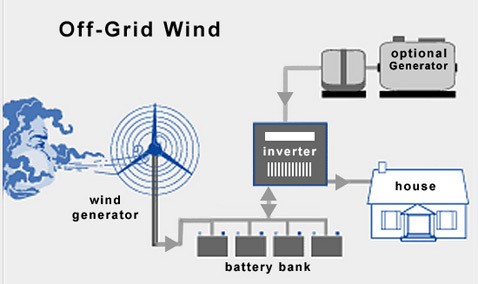
In remote locations, stand-alone systems can be more cost-effective than extending a power line to the electricity grid (the cost of which can ran range from $15,000 to $50,000 per mile).
But these systems are also used by people who live near the grid and wish to obtain independence from the power provider or demonstrate a commitment to non-polluting energy sources.
Successful stand-alone systems generally take advantage of a combination of techniques and technologies to generate reliable power, reduce costs, and minimize inconvenience. Some of these strategies include using fossil fuel or renewable hybrid systems and reducing the amount of electricity required to meet your needs.
Micro hydro Off Grid power Systems
Micro hydropower systems usually generate up to 100 kilowatts (kW) of electricity. Most of the hydropower systems used by homeowners and small business owners, including farmers and ranchers, would qualify as micro hydropower systems. In fact, a 10-kilowatt micro hydropower system generally can provide enough power for a large home, a small resort, or a hobby farm.
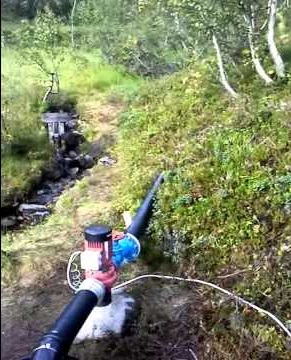
Hydropower systems use the energy in flowing water to produce electricity or mechanical energy. Although there are several ways to harness the moving water to produce energy, run-of-the-river systems, which do not require large storage reservoirs, are often used for micro hydropower systems.
For run-of-the-river micro hydropower systems, a portion of a river's water is diverted to a water conveyance—channel, pipeline, or pressurized pipeline (penstock)—that delivers it to a turbine or waterwheel. T
he moving water rotates the wheel or turbine, which spins a shaft. The motion of the shaft can be used for mechanical processes, such as pumping water, or it can be used to power an alternator or generator to generate electricity.
A micro hydropower system can be connected to an electric distribution system (grid-connected), or it can stand alone (off-grid).
Types of Geothermal Heat Pump Systems

There are four basic types of ground loop systems. Three of these—horizontal, vertical, and pond/lake—are closed-loop systems. The fourth type of system is the open-loop option.
Which one of these is best depends on the climate, soil conditions, available land, and local installation costs at the site.
All of these approaches can be used for residential and commercial building applications.
